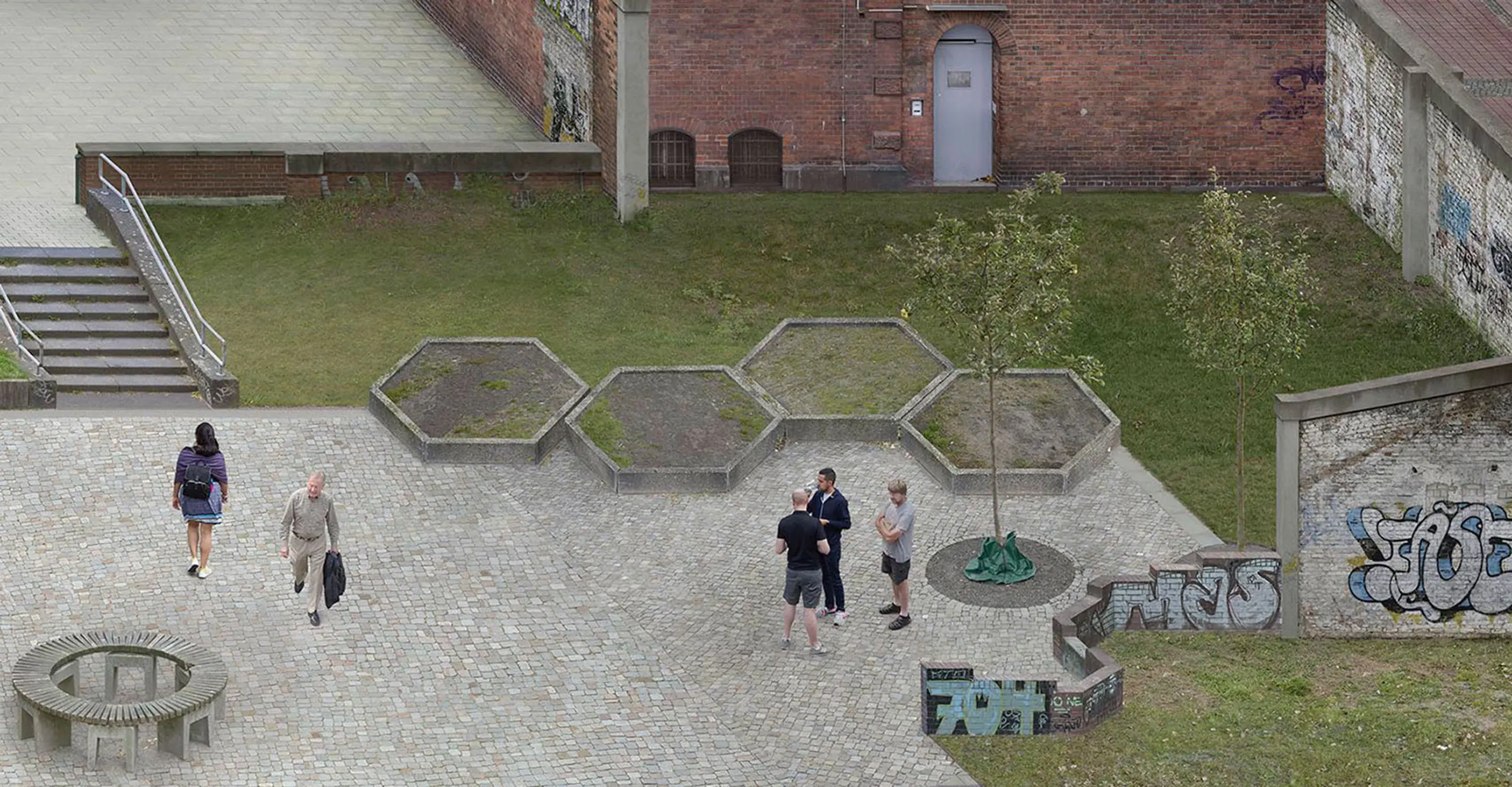HC (hortus conclusus) is a series of photographs by Beate Gütschow offering ostensibly passing views of urban parks. Look closer, though, and there's more to see than meets the eye.
Relieving the Contingency
HC (hortus conclusus), a series of photographs by Beate Gütschow, offers ostensibly passing views of urban parks. The viewpoint carries a sense of detachment, as if the observer was disconnected from the world outside. Urban life is evident in the shabby turf, trampled by many careless visitors and scorched by the sun. There are stinging nettles and shards of broken glass; familiar sights in big cities. The dispassionate, precise detail of the pictures shows objects and plants to be vital and verdant yet also worn or even ragged. Accessing the pictures seems easy, almost coincidental, like glancing casually out of a window. But at length the observer becomes aware of the fact that the light beam usually evoked by a camera lens is missing.
Beate Gütschow photographs parks to rearrange the perspective. For each work, she takes up to 150 photos of individual objects, such as walls, benches and plant troughs, to assemble them digitally as photogrammetric models. An algorithm connects identical-appearing points on several photographs to form a polygon net, visualising the objects’ depth. Finally, the photographic surface is projected on to the net. Taking this data record as raw material, rather than the usual linear perspective camera-lens alignment, Gütschow uses a 3D computer programme to let the object appear in a cavalier perspective. In this way, for example, the depth contours of cubes are turned into rhombuses, so the lines in the picture do not converge but run parallel.
By her free composition of the photograph’s surface in HC (hortus conclusus), Gütschow refers to the garden portrayals of medieval illumination. Conventionally, some aspects of an object are overlooked due to the photograph’s central perspective. But in photogrammetry, they all gain equal value, allowing Gütschow to decide on the view she wants retrospectively and digitally. During the composition process, Gütschow puts together landscape elements from different images of architectural objects in varying perspectives and painstakingly re-assembles them at the computer in time-consuming, precision work. Where grass meets walls, she recreates continuity by adjusting the colour nuances, brightness and contrasts.
The garden that Gütschow creates reflects her delight in photographic abundance; every picture element used is photographed reality. Her artistic strategy is to mediate between two-dimensional composition and photographic depth. Within the photographic series, the run-down park becomes a visual puzzle; the observer can only imagine the unseen breaks in the pictorial continuity by drawing on his or her own visual experience. As well as missing vanishing points, the photographs composed by Gütschow have no linear horizon but appear opened like a book, pouring the picture content toward the observer. In some pictures the horizon appears as a resting place; a broad band that forms a central oasis rather than an alignment. While expanding the non-prioritising photographic abundance to encompass multiple views of objects, Gütschow also places it within a narrative framework in the form of the garden motif. What the observer finds, abandoning expectations of a conventional photographic perspective, is a sedate place.
People in this photographic series are conspicuous mostly in their absence:Graffiti on the walls and benches bear witness to a lively youth culture but the seats and paths are mostly empty. Plants and trees are pruned, and sometimes stunted. If visitors can be seen in the park, they appear as incidental figures, some lost in reverie. One figure is particularly striking: a woman immersed in using a cellphone, oblivious to the world around her.With her physical attitude, seated cross-legged and head inclined over her mobile device, she is reminiscent of Spinario, the Roman sculpture of a boy removing a thorn from his foot. Her bent back shields her from the outside world, protecting her while she concentrates on the tensed part of her body. Like Spinario, she is hoping for relief. And Gütschow’s pictures offer relief – from the rationale of photographic reality. They relieve the contingency of photography without diminishing its abundance. The pictures appear almost conciliatory, precisely because they transform the survey – the operative purpose of the photographic process–into a form of artistic mediation, instead of measuring the objects by pressing a button.







